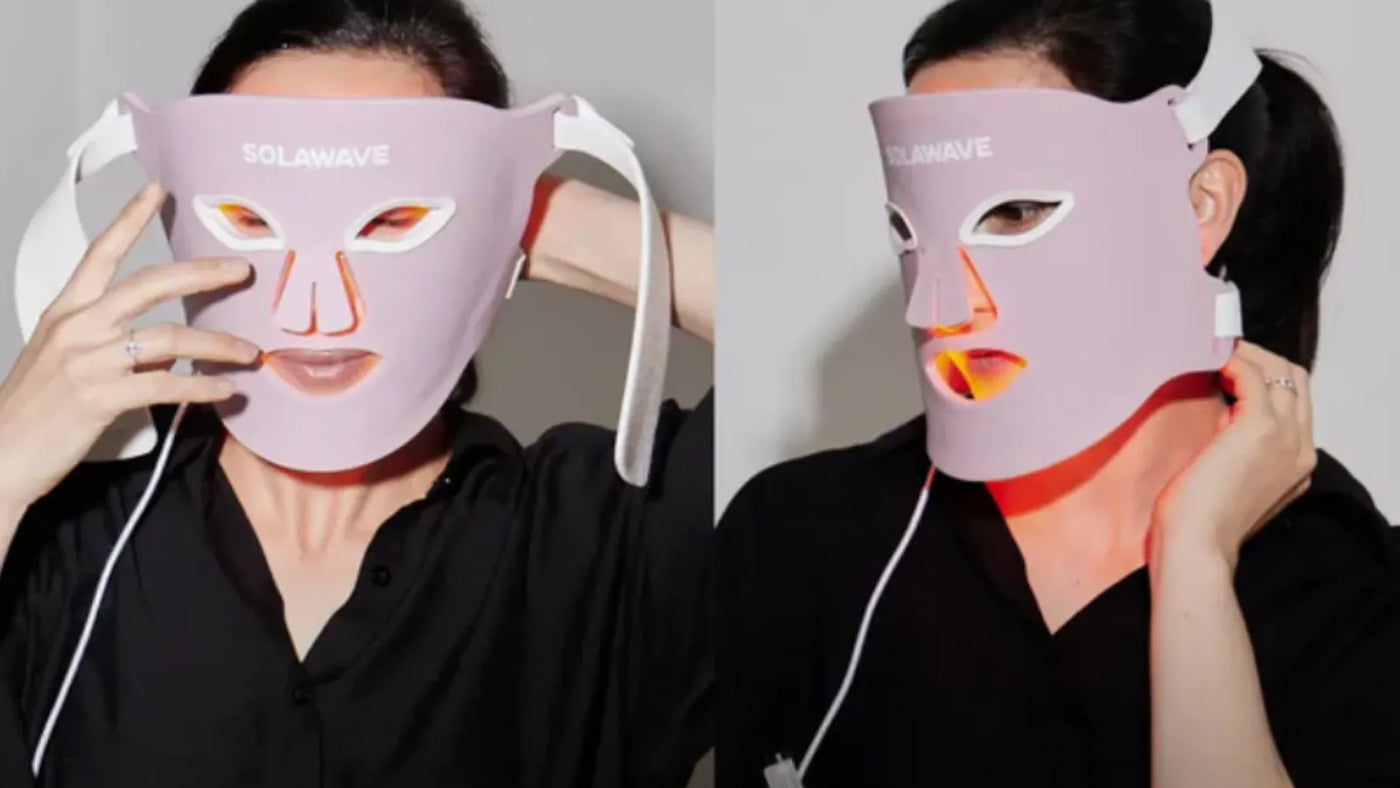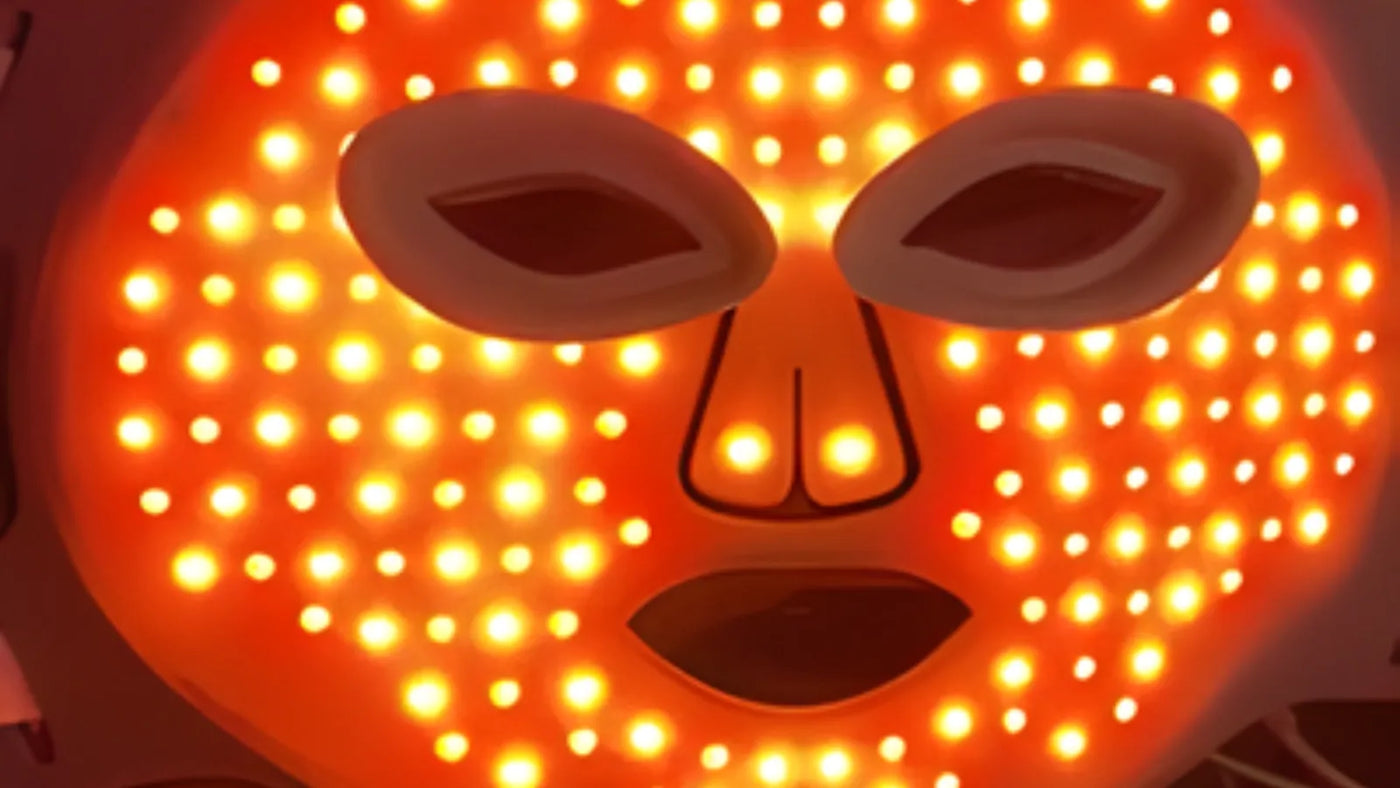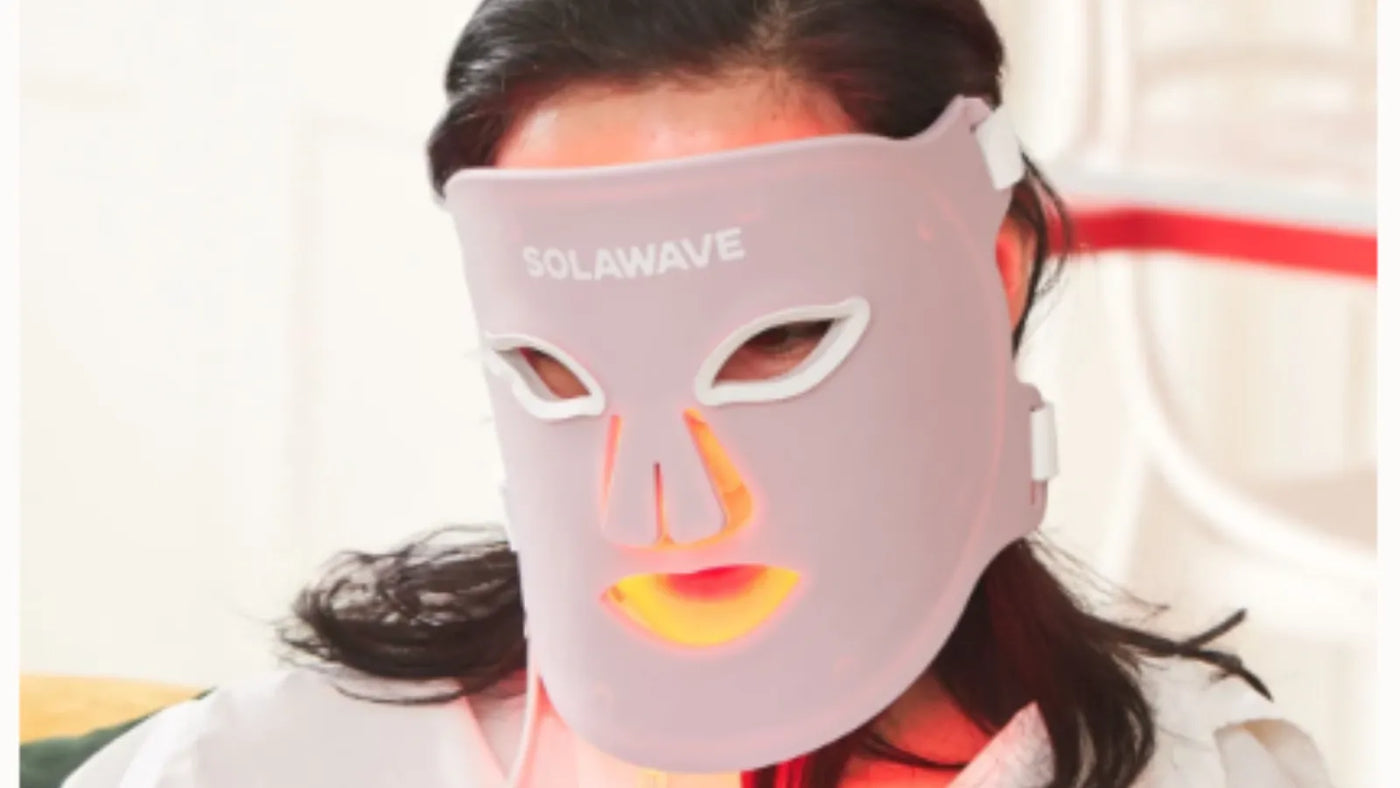
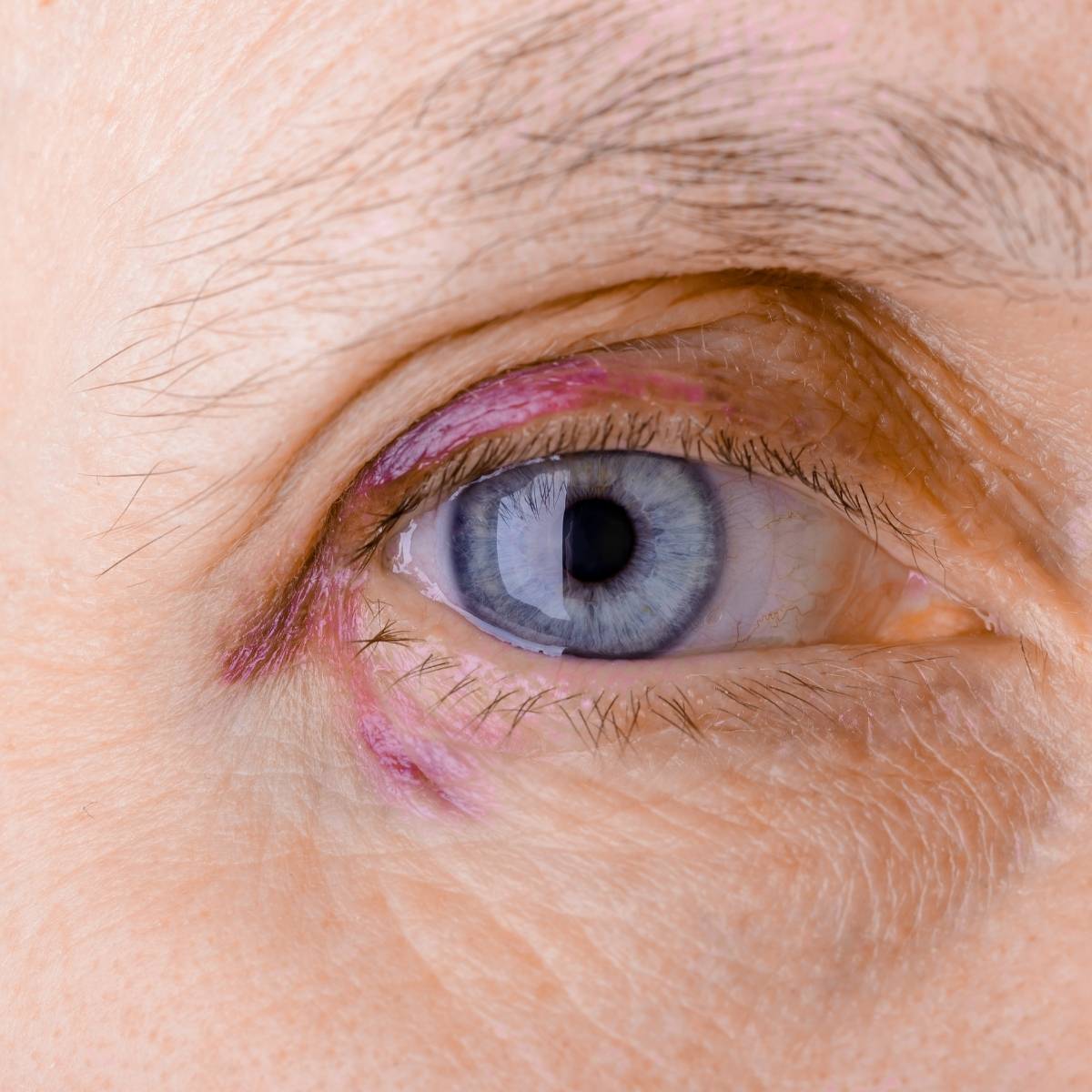
How To Treat Broken Capillaries
Broken capillaries, often referred to as “spider veins,” are tiny blood vessels that become visible just beneath the surface of your skin. These small, red or purple lines can appear anywhere, but they’re most commonly found on your face—especially around the nose, cheeks, and chin—as well as on your legs. While broken capillaries are generally harmless, their appearance can be frustrating and may affect your confidence.
This article is intended for informational purposes only. It’s important to understand that while there are various ways to help address the appearance of broken capillaries, Red Light Therapy is not a cure or treatment for broken capillaries or any other medical condition. If you’re concerned about changes in your skin or are seeking treatment options, always consult with a qualified healthcare professional.
 $126 Savings
$126 Savings 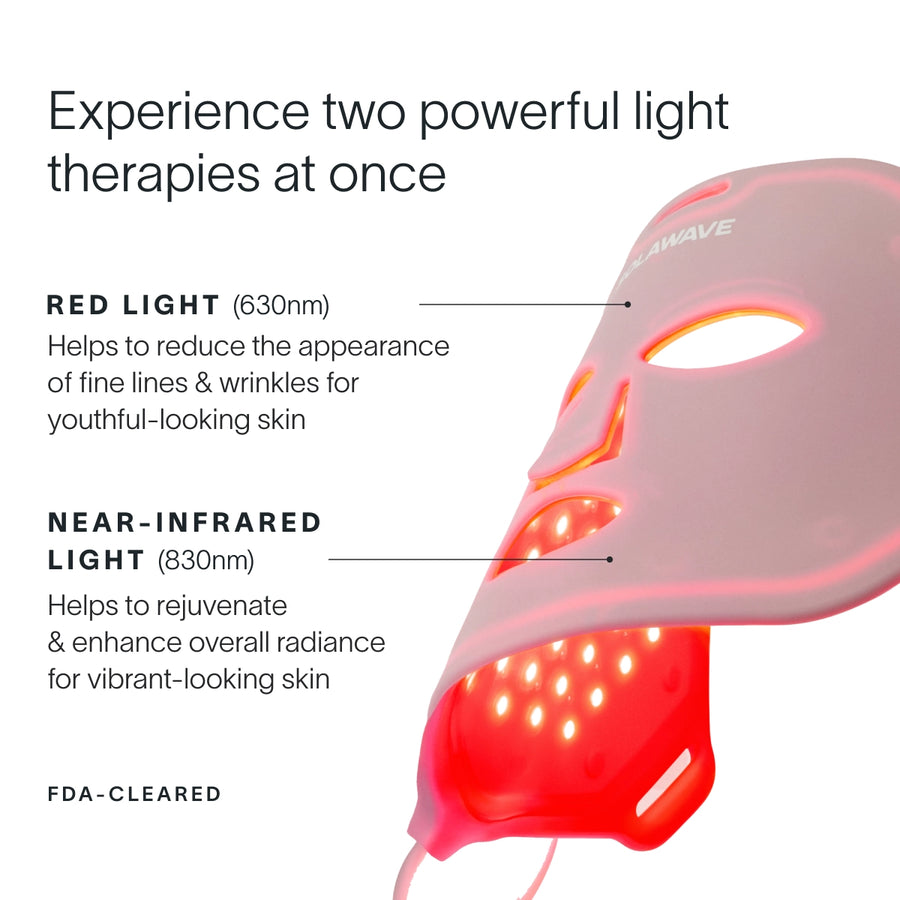
What Are Broken Capillaries?
Capillaries are the smallest blood vessels in your body, forming an intricate network that connects arteries and veins. Their primary function is to deliver oxygen and nutrients to your tissues while removing waste products. These vessels are so tiny that red blood cells often travel through them in single file, ensuring efficient exchange between your blood and surrounding tissues.
Broken capillaries, sometimes called “telangiectasia,” occur when these delicate vessels become dilated or damaged, making them visible just beneath the surface of your skin. Instead of remaining hidden, they appear as fine red, purple, or blue lines, often resembling a web or branch-like pattern. While the term “broken” is commonly used, the vessels are not actually ruptured; rather, they have become enlarged or weakened, allowing blood to pool and become visible.
Several factors can contribute to the development of broken capillaries:
 $104 Savings
$104 Savings 
-
Genetics: If your family members have visible capillaries, you may be more likely to develop them as well.
-
Sun Exposure: Ultraviolet (UV) rays can weaken blood vessel walls and thin the skin, making capillaries more prone to damage and visibility.
-
Aging: As you age, your skin naturally becomes thinner and loses elasticity, increasing the likelihood that capillaries will show through.
-
Skin Trauma: Physical injuries, aggressive facial treatments, or even frequent nose blowing can damage capillaries.
-
Medical Conditions: Certain conditions, such as rosacea or liver disease, can increase your risk.
 $152 Savings
$152 Savings 
-
Environmental Factors: Extreme temperatures, wind, and pollution can also contribute to capillary damage.
-
Lifestyle Factors: Excessive alcohol consumption, smoking, and chronic stress may weaken blood vessels over time.
Anyone can develop broken capillaries, but some people are more at risk than others. Individuals with fair or sensitive skin, those with a family history of visible vessels, and people who spend a lot of time outdoors without sun protection are especially susceptible. Additionally, hormonal changes—such as those during pregnancy or menopause—can make capillaries more likely to become visible.
What Do Broken Capillaries Look Like?
Broken capillaries are typically easy to identify once you know what to look for. They appear as thin, thread-like lines or networks just beneath the skin’s surface. The most common colors are red, purple, or blue, and they often form patterns that resemble spider webs or tree branches. These marks are usually painless and don’t cause any physical discomfort, but their appearance can be distressing for some people.
Broken capillaries can be mistaken for other skin concerns. For example, rosacea is a chronic skin condition that often causes redness and visible blood vessels, but it also includes symptoms like flushing, bumps, and skin sensitivity. Spider veins, while similar in appearance, are typically larger and found on the legs rather than the face. Bruises, on the other hand, result from trauma and change color as they heal, whereas broken capillaries tend to remain the same unless treated.
![A rose gold SolaWave [BINAERY] 4-in-1 Radiant Renewal Skincare Wand stands by a serum bottle, highlighting advanced skin technology for reducing fine lines. Award badges from leading magazines are displayed to the right. || Rose Gold](https://www.solawave.co/cdn/shop/files/Updated-_RadiantRenewalSkincareWandKitLightBoostSerum-RoseGold_1200x_c979c64a-44e4-4f0c-9110-00c7cd0d18f5.webp?v=1733859035&width=900) POPULAR
POPULAR 
Consider consulting a healthcare professional if you notice sudden or widespread changes in your skin, if the appearance of broken capillaries is accompanied by other symptoms (such as pain, swelling, or skin ulcers), or if you’re unsure about the cause of your skin changes. A dermatologist can provide a proper diagnosis, rule out underlying medical conditions, and recommend the most appropriate treatment options for your individual needs. Remember, while broken capillaries are generally harmless, it’s always wise to seek expert advice if you have concerns about your skin’s health.
Proven Ways to Help Address Broken Capillaries
If you’re looking to reduce the appearance of broken capillaries, several dermatologist-recommended treatments are available. Each option varies in effectiveness, risks, and recovery time, so it’s important to consult a qualified professional before starting any treatment.
Laser Therapy: Laser treatments, such as pulsed dye laser and Intense Pulsed Light (IPL), are among the most common methods for targeting broken capillaries. These devices use focused light to heat and collapse the visible vessels, causing them to fade over time. Most people require multiple sessions, and mild redness or swelling may occur temporarily after each treatment.
Sclerotherapy: Primarily used for larger vessels on the legs, sclerotherapy involves injecting a solution directly into the affected capillaries, causing them to collapse and gradually disappear. This treatment is generally safe but may cause temporary bruising or discomfort.
Topical Treatments: Certain creams, such as those containing vitamin K or retinoids, may help strengthen blood vessels and improve skin texture. While these products can support overall skin health, their ability to significantly reduce broken capillaries is limited compared to professional procedures.
Lifestyle Changes: Protecting your skin from sun exposure, using gentle skincare products, and avoiding triggers like extreme temperatures or harsh treatments can help prevent further damage. Adopting healthy habits may also reduce the risk of new broken capillaries forming.
A professional diagnosis is essential to ensure you’re addressing the right concern and to rule out underlying conditions. Your dermatologist can recommend the most suitable treatment plan based on your skin type, medical history, and personal goals. Recovery times and results will vary, but most treatments offer gradual improvement with minimal downtime.
At-Home Care and Prevention Tips
Supporting your skin’s health at home can make a noticeable difference in both the appearance and prevention of broken capillaries.
-
Daily Skincare: Use a gentle cleanser, avoid scrubbing, and apply a moisturizer suited for sensitive skin. Look for products with calming ingredients like niacinamide or aloe vera.
-
Minimize Appearance: Green-tinted concealers can help neutralize redness, while lightweight foundations can provide additional coverage without irritating your skin.
-
Prevention: Always wear broad-spectrum sunscreen, even on cloudy days, to protect against UV damage. Avoid hot water, harsh exfoliants, and aggressive facial treatments. If you have a skin condition like rosacea, work with your healthcare provider to manage flare-ups and reduce your risk of developing new broken capillaries.
By adopting these habits, you can help maintain healthy skin and minimize the likelihood of broken capillaries becoming more noticeable.
Light Therapy and Broken Capillaries: What Does the Research Say?
Light Therapy is a broad term that includes several types of treatments using specific wavelengths of light to support skin health. Red Light Therapy, Near-Infrared Light Therapy, Blue Light Therapy, and Amber Light Therapy each use different parts of the light spectrum and are often explored for their potential benefits in skin rejuvenation, reducing inflammation, and promoting healing.
Current research suggests that Light Therapy may help improve overall skin appearance and support the skin’s natural repair processes. Some studies have shown that Red Light Therapy and Near-Infrared Light Therapy can enhance collagen production and reduce redness in certain skin conditions. However, there is limited evidence directly linking any form of Light Therapy to the treatment or removal of broken capillaries. Most clinical guidelines do not recognize Light Therapy as a proven solution for this specific concern.
It’s important to emphasize that Red Light Therapy is not a cure or treatment for broken capillaries or any medical condition. If you are considering Light Therapy for skin health, always consult a healthcare provider first to ensure it’s appropriate for your needs and to discuss evidence-based options.
Conclusion
Broken capillaries are a common skin concern, often caused by genetics, sun exposure, aging, or skin trauma. While there are several dermatologist-recommended treatments and at-home strategies to help address their appearance, it’s essential to seek professional advice for diagnosis and care. Red Light Therapy and other Light Therapies are not cures or treatments for broken capillaries, and their effectiveness for this specific issue is not supported by current research.
Sources:





















